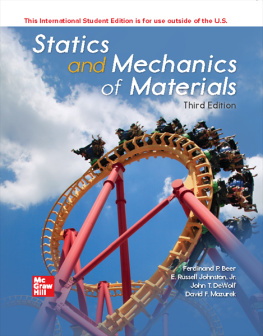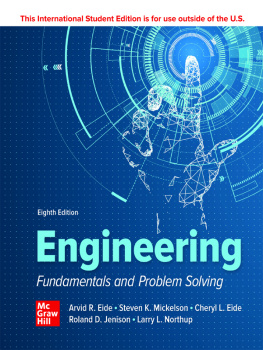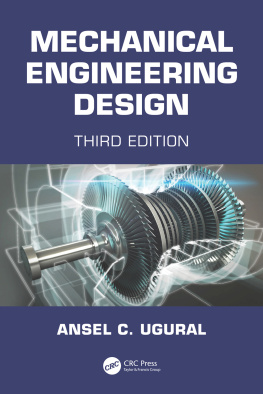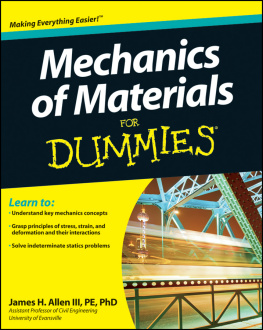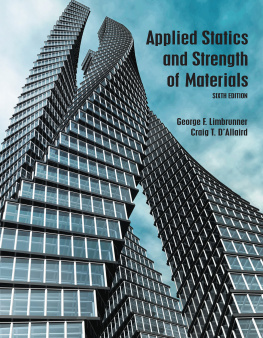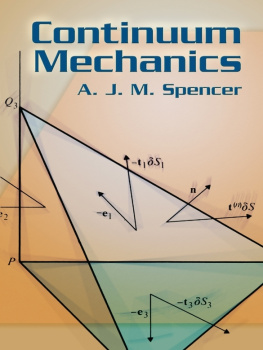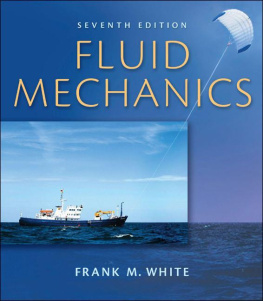
Page ii

STATICS AND MECHANICS OF MATERIALS
Published by McGraw-Hill Education, 2 Penn Plaza, New York, NY 10121. Copyright 2021 by McGraw-Hill Education. All rights reserved. Printed in the United States of America. No part of this publication may be reproduced or distributed in any form or by any means, or stored in a database or retrieval system, without the prior written consent of McGraw-Hill Education, including, but not limited to, in any network or other electronic storage or transmission, or broadcast for distance learning.
Some ancillaries, including electronic and print components, may not be available to customers outside the United States.
This book is printed on acid-free paper.
1 2 3 4 5 6 7 8 9 LWI 24 23 22 21 20
ISBN 978-1-260-57098-4 MHID 1-260-57098-3
Cover Images: Doug Lemke/Shutterstock
All credits appearing on page or at the end of the book are considered to be an extension of the copyright page.
The Internet addresses listed in the text were accurate at the time of publication. The inclusion of a website does not indicate an endorsement by the authors or McGraw-Hill Education, and McGraw-Hill Education does not guarantee the accuracy of the information presented at these sites.
mheducation.com/highered
Page iii
About the Authors
John T. DeWolf, Emeritus Professor of Civil Engineering at the University of Connecticut, joined the Beer and Johnston team as an author on the second edition of Mechanics of Materials. John holds a B.S. degree in civil engineering from the University of Hawaii and M.E. and Ph.D. degrees in structural engineering from Cornell University. He is a Fellow of the American Society of Civil Engineers and a member of the Connecticut Academy of Science and Engineering. He is a registered Professional Engineer and a member of the Connecticut Board of Professional Engineers. He was selected as a University of Connecticut Teaching Fellow in 2006. Professional interests include elastic stability, bridge monitoring, and structural analysis and design.
David F. Mazurek, Professor of Civil Engineering at the United States Coast Guard Academy, joined the Beer and Johnston team on the eighth edition of Statics and the fifth edition of Mechanics of Materials. David holds a B.S. degree in ocean engineering and an M.S. degree in civil engineering from the Florida Institute of Technology and a Ph.D. degree in civil engineering from the University of Connecticut. He is a Fellow of the American Society of Civil Engineers and a member of the Connecticut Academy of Science and Engineering. He is a registered Professional Engineer and has served on the American Railway Engineering & Maintenance-of-Way Associations Committee 15Steel Structures since 1991. Among his numerous awards, he was recognized by the National Society of Professional Engineers as the Coast Guard Engineer of the Year for 2015. Professional interests include bridge engineering, structural forensics, and blast-resistant design.
Page iv
Brief Contents
Page v
Contents
Page vi
Page vii
Page viii
Page ix
*Advanced or specialty topics
Page x
Preface
Objectives
The main objective of a basic mechanics course should be to develop in the engineering student the ability to analyze a given problem in a simple and logical manner and to apply to its solution a few fundamental and well-understood principles. This text is designed for a course that combines statics and mechanics of materialsor strength of materialsoffered to engineering students in the sophomore year.
General Approach
In this text, the study of statics and mechanics of materials is based on the understanding of a few basic concepts and on the use of simplified models. This approach makes it possible to develop all the necessary formulas in a rational and logical manner, and to clearly indicate the conditions under which they can be safely applied to the analysis and design of actual engineering structures and machine components.
Practical Applications Are Introduced Early. One of the characteristics of the approach used in this text is that mechanics of particles is clearly separated from the mechanics of rigid bodies. This approach makes it possible to consider simple, practical applications at an early stage and to postpone the introduction of the more difficult concepts. As an example, statics of particles is treated first (Chap. 2); after the rules of addition and subtraction of vectors are introduced, the principle of equilibrium of a particle is immediately applied to practical situations involving only concurrent forces. The statics of rigid bodies is considered in Chaps. 3 and 4. In Chap. 3, the vector and scalar products of two vectors are introduced and used to define the moment of a force about a point and about an axis. The presentation of these new concepts is followed by a thorough and rigorous discussion of equivalent systems of forces, leading, in Chap. 4, to many practical applications involving the equilibrium of rigid bodies under general force systems.
New Concepts Are Introduced in Simple Terms. Because this text is designed for the first course in mechanics, new concepts are presented in simple terms and every step is explained in detail. On the other hand, by discussing the broader aspects of the problems considered and by stressing methods of general applicability, a definite maturity of approach is achieved. For example, the concepts of partial constraints and statical indeterminacy are introduced early and are used throughout.
Fundamental Principles Are Placed in the Context of Simple Applications. The fact that mechanics is essentially a deductive science based on a few fundamental principles is stressed. Derivations have been presented in their logical sequence and with all the rigor warranted at this level. However, the learning process being largely inductive, simple applications are considered first.
Page xi
As an example, the statics of particles precedes the statics of rigid bodies, and problems involving internal forces are postponed until Chap. 6. In Chap. 4, equilibrium problems involving only coplanar forces are considered first and solved by ordinary algebra, while problems involving three-dimensional forces and requiring the full use of vector algebra are discussed in the second part of the chapter.
The first four chapters treating mechanics of materials (Chaps. 8, 9, 10, and 11) are devoted to the analysis of the stresses and of the corresponding deformations in various structural members, considering successively axial loading, torsion, and pure bending. The remaining five chapters (12 through 16) expand on what is learned in Chaps. 8 through 11. Chapter 12 begins with a discussion of the shear and bending-moment diagrams and then addresses the design of beams based on the allowable normal stress in the material used. The determination of the shearing stress in beams and thin-walled members under transverse loadings is covered in Chap. 13. Chapter 14 is devoted to the transformation of stresses and design of thin-walled pressure vessels. The determination of deflections in beams is presented in Chap. 15. Chapter 16, which treats columns, contains material on the design of steel, aluminum, and wood columns.
Next page
